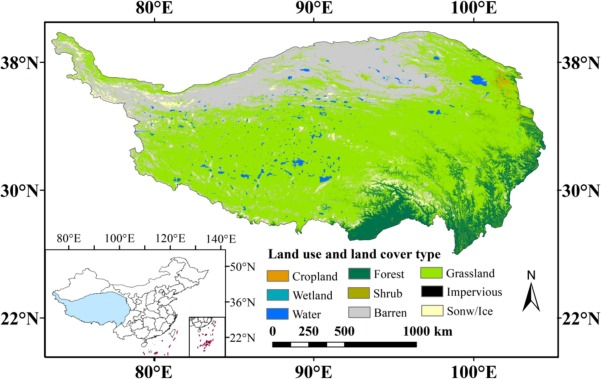When implementing ecological restoration practices, valid references are essential to justify and improve best practices for ecological restoration in natural resource management. Despite numerous assessments of ecological restoration, comprehensive and practical reference standards remain scarce. Most existing studies rely on vegetation cover or indices to evaluate restoration effects. However, since vegetation cover is influenced by factors such as resource endowment, human activities, and global changes, it cannot solely reflect the impact of ecological policies. Therefore, disentangling the effects of ecological restoration from environmental variables is crucial for accurately assessing their true impact. In this study, based on the theories of “spatial proximity” and “similarity of environmental characteristics,” we utilized a spatial sliding window-based Similar-Habitat-Based Vegetation Restoration Potential (SHB-VRP) model. We selected nine environmental variables including climate change, environmental background, and socio-economic factors from 2000 to 2020. 0.98 of the Maximum Enhanced Vegetation Index (MEVI) under these identical environmental conditions on the Qinghai-Tibet Plateau (QTP) was extracted as the reference layer. This method accounts for spatial dependence and dissimilarity. We then calculated the Vegetation Restoration Potential Achievement Degree (VRP-AD) by comparing current Enhanced Vegetation Index (EVI) values to this reference layer, which indicates the level of ecological restoration achieved. Our results show that the correlation between VRP-AD and Ecological Restoration Project Intensity (ERPI) was higher than that between EVI and ERPI, suggesting that the reference layer is more effective than vegetation indices alone. Additionally, from 2000 to 2020, MEVI across the QTP ranged from 0 in the northwest to 0.70 in the southeast. Sub-regions such as Nujiang, Linzhi, Diqing, and Lijiang exhibited higher average MEVI (0.34 to 0.38). The overall VRP-AD for the QTP was 0.62, with an annual slope of 0.17 %. Sub-regions like Xining, Haidong, and Aba showed VRP-AD indices above 0.80, reflecting significant progress in ecological restoration. Interestingly, despite low ERPIs in Lijiang and Dingxi, these areas demonstrated good vegetation growth, indicating a high natural vegetation endowment. These findings suggest that Vegetation Restoration Potential (VRP) and VRP-AD derived from similar habitats can effectively measure vegetation restoration effects, even when restoration intensity varies across sites. This study is expected to provide new theoretical and methodological support for ecological policy evaluation and vegetation restoration planning.

Fig. 1. Location and Land use/Land cover of the Study area
The link below will guide you to the reading:
https://doi.org/10.1016/j.ecoleng.2025.107514
